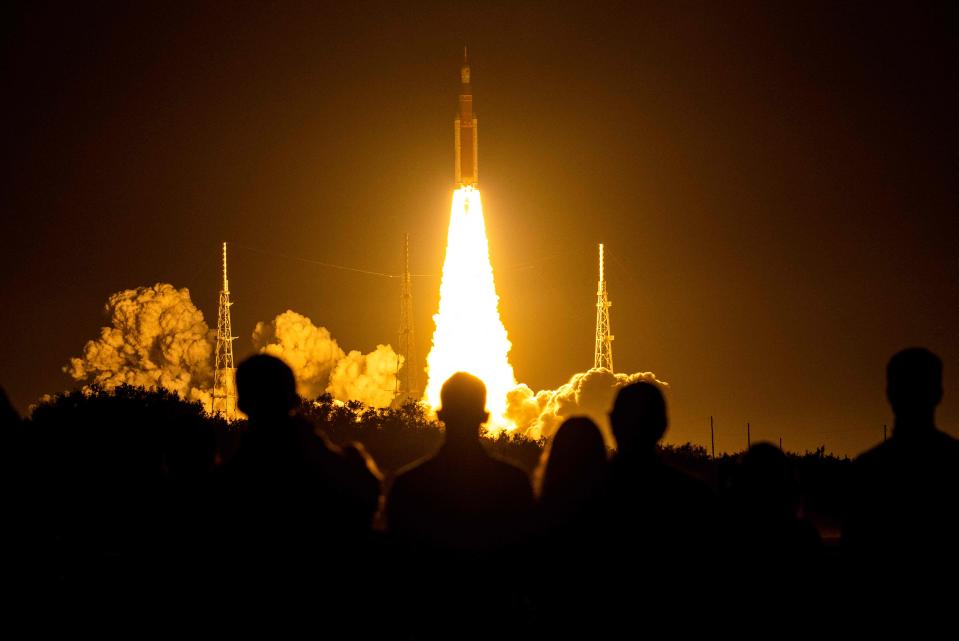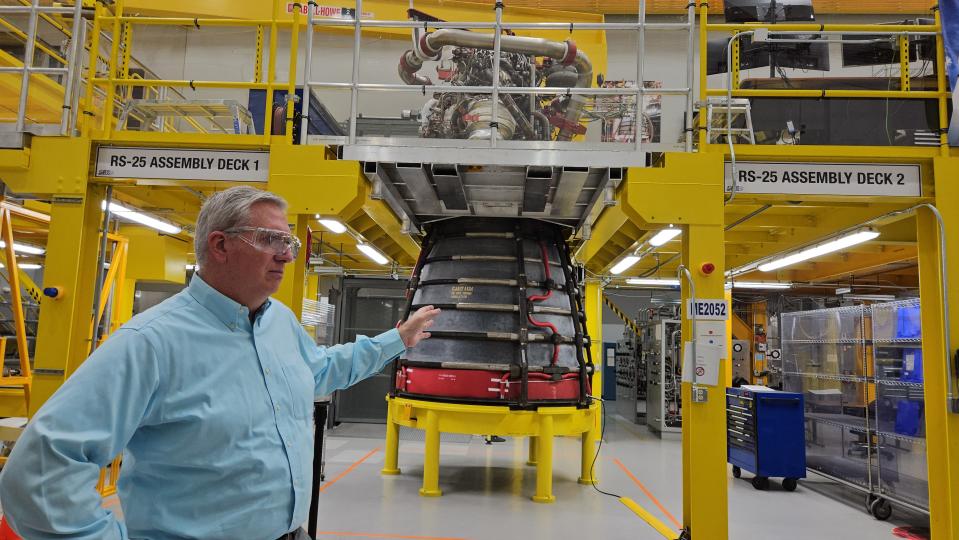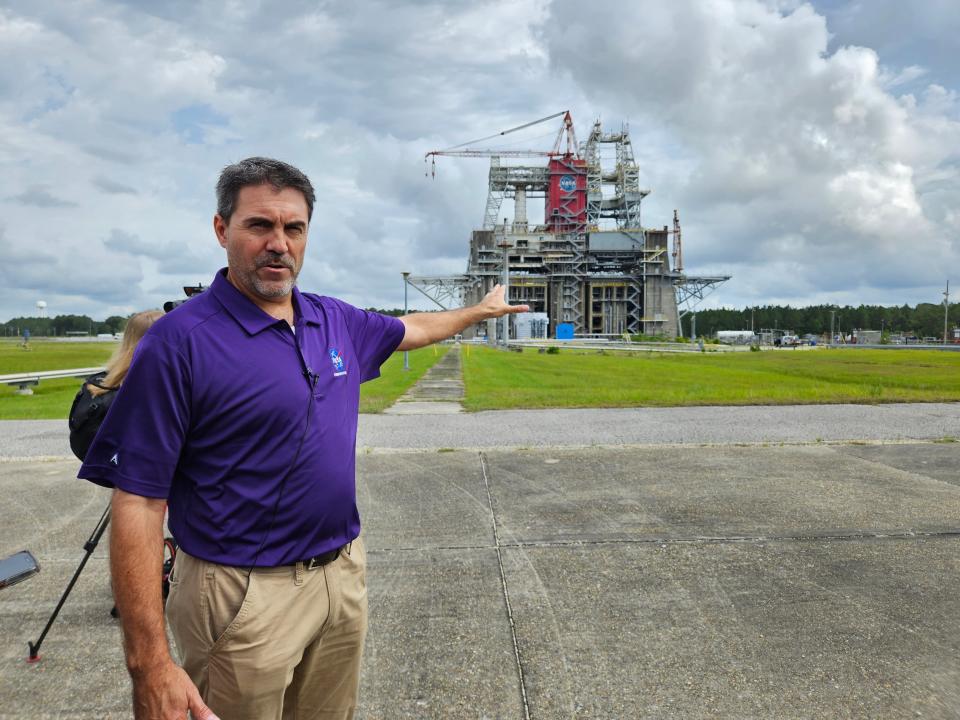Stennis Space Center prepares engines for Artemis missions to moon and Mars. Details here
While the launch of Artemis I in November made headlines, scientists at NASA are working on future stages of the mission that eventually will put humans back on the moon and later send them to Mars.
On Wednesday, NASA's Stennis Space Center in Hancock County tested its first built-from-scratch engine for the Artemis V mission. It was fired at 113% capacity for 10½ minutes — longer and stronger than needed in an actual rocket launch.
"It's part of the certification process," said Ken Van Stelle, assembly operations manager for Aerojet Rocketdyne. "We try to run the engine a lot to see what breaks. That's all part of the lessons we want to learn."

The RS-25 engine has been around since the 1960s, but with new technology and new missions, it has undergone a lot of changes over the years.
NASA has continued to maintain, refurbish and repurpose the 16 RS-25s built and designed at Stennis by Aerojet Rocketdyne, but with a new era in space flight taking shape, a sleeker model that can pack the same punch is needed.
The new RS-25 engines will be built for single use, but at a 30% to 35% lower price tag, Aerojet Rocketdyne officials said. The core-stage engines will propel the SLS rockets and Orion spacecraft into outer space.

Rocket launch schedule: Upcoming Florida launches and landings
With approximately 12,000 parts — roughly 65% built at Aerojet Rocketdyne and others coming in as pre-assembled parts — there's a lot of room to cut corners and cut costs.
One of the most efficient ways to do that is by using a 3D printer to create parts. It is called an additive process, meaning the parts use available materials rather than taking a big block of metal and carving it down to a usable part, which is a subtractive process, Van Stelle said.
The company has been tasked with making 24 new RS-25s in the near future to be used for other Artemis missions, which include lunar exploration and sustainability efforts. Once settled on the moon, the program will turn its eyes to Mars, where NASA hopes to send humans by 2039.
"We're not planning to go to the moon to plant a flag," said John Blevins, chief engineer for NASA's Space Launch System rockets. We're building up the capabilities and learning everything we can do on the lunar surface and that helps us prepare to go to Mars."

Stennis also is preparing the B-2 test stand for Exploration Upper Stage testing, according to Test Stand Director Ryan Roberts. The B test stand was built in the 1960s during the race to be the first into outer space.
While equally important, testing the upper-stage engines is not as dramatic as the RS-25 tests, Roberts said.
"The RL-10 engines in the upper stage is a lot smaller," he said. "It's not going to have as much steam and not going to be quite as loud."
Do you have a story to share? Contact Lici Beveridge at lbeveridge@gannett.com. Follow her on Twitter @licibev or Facebook at facebook.com/licibeveridge.
This article originally appeared on Mississippi Clarion Ledger: NASA tests engine at Stennis Space Center for missions to moon, Mars

